Each year presents its own unique marketing challenges for independent K-12 schools, and this year is no exception. On the heels of a global pandemic, a drastically shifting economy, and a privacy-centric online advertising space, schools need to allocate annual marketing dollars smarter and leaner than in the past in order to more effectively reach right-fit families online.
Here are some tips for schools looking to develop a stronger and smarter digital marketing strategy this year:

1. Create a Media Plan
First, what is a media plan? While this might seem like a no-brainer, many schools lack a central place to set, track, and report on the digital marketing efforts underway inclusive of the goals they are trying to accomplish. A media plan is both tactical and strategic. For some schools, it can be part of the overarching strategic marketing plan. For others, it’s a basic spreadsheet that is managed by the Marketing & Communications department. Regardless of the format, the content should include: strategic enrollment goals; a calendar of admissions and marketing events to support those goals; target audience and demographics information and the associated channels/platforms to best reach those families; and all assets, including the messages and calls to action, the planned budget, how the goals are being measured, who’s overseeing the program, and the performance or results to date. A comprehensive media plan is key for two reasons: it can keep projects on track as well as provide an organized foundation to work with for the next year. Here’s a great media planning resource for schools from Finalsite.
2. Set SMART Goals
As you are starting your media plan, be sure to set up goals to ensure the media and marketing strategy and tactics are aligned. Setting goals will involve getting the whole team on board. This might include the Head of School, the Enrollment Management team, Admissions, Marketing, Communications, IT, and in many cases, board or committee members. Incorporate SMART goals; these goals are Specific, Measurable, Achievable, Relevant, and Time-bound. An example of a goal might be to get 25 families to enroll in lower school next year. A SMART goal breaks it down even further. For example, if in the past the data showed you that 1 out of every 2 families that tour in September ultimately enroll, then your goal may be to get 50 families to tour the lower school in September this year. That is a specific and measurable goal. Whether it’s attainable will be determined by success in past years, the current market, and the marketing and recruitment efforts in place to reach this goal. It is certainly a relevant goal as it relates to your overall admissions, and it’s also a time-bound goal.
Once the SMART goals are established, the media plan will list the campaigns (including the strategies and tactics) that you’re planning in an effort to achieve those goals. For example, your media plan might map out your Facebook organic and paid ads for six weeks. You may also include a plan for optimizing your visit pages on the website to drive traffic to your registration pages, as well as a plan for your email marketing campaigns. These are all tactics in support of the same SMART goal, and should have a specific timeline, with objectives and assets cohesively shaped, executed, and measured.
3. Diversify Your Digital Footprint With Paid Ads
When it comes to paid advertising versus organic strategies, Google Ads and Facebook Ads make up the lion’s share of online ad revenue, and for good reason. These platforms reach millions and when done well, the campaigns really work at driving lots of inquiries for schools. However, there are other platforms out there that should get folded in, to ensure you’re not missing out on a more comprehensive strategy designed to reach more users, and more often, in the coming year. Here are a few:
- Bing Ads: In a recent audit conducted by Enroll Media Group that included 40 Google Analytics accounts of independent day and boarding schools, Enroll Media Group found that Bing makes up 20% of organic website traffic on average. This was second to Google, which made up about 60% of organic search traffic. This data suggests that some schools should execute Bing Search Ads, in addition to Google Ads, in an effort to reach families while they are conducting school-related searches online.
- LinkedIn Ads: This is an increasingly popular business social network that allows you to target parents based on career title, industry, years of experience, level of education, and more. Personalized In-Mail messages, or banner ads in varying formats, can be utilized based on the target audience and message. It’s not just for the parents either — LinkedIn can be used to market corporate discounts or build awareness to alumni and HR professionals at companies recruiting new talent to your city. It has a user-friendly end-user platform, similar to Facebook Ads and Google Ads.
- Mobile Location Targeting: MLT is another tactic often used by schools to reach families based on the exact proximity of their device. Think of mobile location targeting as a virtual billboard — getting in front of people driving by, walking by, or physically in a certain building at a particular time. What’s more, you can reach their device even after they’ve left, and track it to see if the devices you marketed to end up back on campus. In many cases, targeting the parents right in their homes based on an inquiry list is possible too. There are dozens of platforms that offer this tactic, but you will want to explore the one that makes sense for your school or work with an experienced agency to ensure you build the right custom audience online.
4. Lean Into Analytics for Marketing ROI
When done right, digital marketing requires very little, if any, guesswork to determine if something was effective or not. Track your marketing every step of the way to ensure it is delivering desired results, and pivot throughout as needed. Your media plan should, and will, change as a result of what’s working. Here are some tips to ensure you are leveraging the right tracking and analytics tools before, during, and after you launch a marketing campaign:
- Leverage Google Analytics to set goals and to understand behavior on your website that can inform marketing results. (If you haven't already, you should upgrade your Analytics Account to the most recent version, known as Analytics 4 - more on that here in this blog about G4, and privacy restrictions ahead).
- Check out Search Console, which should be used for benchmarking your Search Engine Optimization (SEO) rankings and ensuring you are appearing higher for key search rankings, and prioritizing the right website pages.
- Integrate your CRM with paid advertising to track the exact source of inquiries and leads through your CRM or marketing automation tool; recording the quality of those leads is imperative. HubSpot has a free CRM & marketing tool everyone should check out as a starting point if you don’t already use one for your prospective student forms and emails.
- Use custom URL parameters (known as UTMs) on marketing to ensure you’re able to identify which channels and campaigns are driving desired results on your website with analytics tools like Google and HubSpot. Check out Google’s free URL builder for help creating them.
- Set Up Platform Pixels to track key pages and actions within the ad platform itself for Facebook, Bing, LinkedIn, MLT and more; however, it’s critical not to rely on just Pixels (we’d recommend using Analytics and CRM data as well, as suggested above) as some platforms, like Google, rely on third-party cookies, and are phasing those out. A best practice would be to cover all your bases and track media in multiple ways.
- Consider AB testing, which allows you to split your messaging across two distinct groups so you can determine which messages are most effective. You can use AB testing on ads and event landing pages to avoid guesswork and leverage the data to ensure that you’re optimizing your marketing. Google Optimize is a great, free tool to use for AB testing on a landing page’s images, calls to action, and form length, to name a few.
5. Align Messages with the Parent Journey, Not the Funnel
Prospective parents in the process of finding, choosing, and ultimately enrolling their children in school do not necessarily take a linear path. Parents don’t always start at the top of the funnel and work their way through without friction to the bottom. Sometimes they come in and out of the funnel and enter at different stages. This means your marketing plan and chosen platforms need to be informed by the data to get a sense of where parents are in the funnel, versus just using your admissions timeline as your marketing compass.
An example of this might be to ensure that ads for awareness building that speak to your basic info and unique selling points are targeted specifically to those parents just beginning their search for private schools. These should run all year, parallel to messages designed to reach those who are already aware of you and those in consideration phases. Use Google Analytics to identify these folks and their interest, based on their search query, or by their actions/behaviors on your website and social properties.
Aligning messages with the parent's journey also means giving users multiple ways to engage with you based on what’s the best fit for them, not just what you want them to do. Giving them the option to learn more, tour or apply, are all great calls to action (CTAs) to make available right on a landing page form. Avoid things like “Apply Now” as a singular CTA on every ad and landing page, because for families new to the area, or just beginning their search, a softer call to action like visiting or downloading a brochure might be more realistic for them. Even if it’s your application season, parents may be more connected virtually and are not ready to make that jump into applying just yet. When you align various messages with your marketing, you are taking those dollars further by reaching those families where they are in their journey and increasing the likelihood of them engaging with the marketing assets you've worked so hard to create.
If you need help aligning your digital marketing strategy with enrollment needs, and fitting it all into a manageable budget, talk to Enroll Media Group. We partner with independent PK-12 schools across the country of all sizes and missions to execute digital marketing, build awareness, and drive enrollment.

